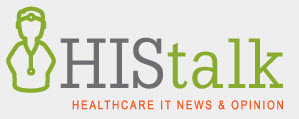11-02-2018, 06:29 AM
PatientPing Expands Care Coordination Offering to Help Organizations Succeed Under BPCI Advanced
Real-time patient tagging capability enables healthcare organizations to follow patients belonging to a bundled program across care settings to improve outcomes
BOSTON —(Nov. 1 , 2018) — PatientPing, a health technology company that connects providers to seamlessly coordinate patient care, today announced enhancements to its product suite to help healthcare organizations throughout the nation improve outcomes under bundled payment arrangements. This product, which will “tag” patients in real time who belong to bundled programs, can help organizations improve quality of care and reduce episode expenditures under the Bundled Payments for Care Improvement Advanced (BPCI Advanced) initiative, which was launched by the Centers for Medicare & Medicaid Services’ (CMS) Center for Medicare and Medicaid Innovation (Innovation Center) on Oct. 1, as well as other bundled payment models such as the Comprehensive Care for Joint Replacement (CJR) model.
“Post-acute care costs after discharge often take hospitals who enter these payment models by surprise,” said Jay Desai, founder and CEO of PatientPing. “Our solution activates the acute and post-acute network for hospitals that are taking on financial risks for these episodes and helps them reduce avoidable utilization. This is a win-win for the health system and for patients, since it enables continuity of care post-discharge and leads to lower episodic cost for health systems and for payers.”
How PatientPing Improves Outcomes Under Bundled Payment Programs
Using a pre-defined and customizable set of criteria, PatientPing “tags” patients belonging to a bundled-payment cohort in real time. For instance, hospitals participating in BPCI Advanced for patients who have received coronary artery bypass graft (CABG) surgery will receive notifications through PatientPing, enabling visibility into the continuum of care.
The tool will also create a dynamic roster for patients by selected bundle episode, allowing all members of the care team to monitor events post-discharge. Those using PatientPing can immediately see a list of their new and existing bundles patients, allowing greater focus on care coordination while reducing unnecessary detective work.
Considering that over 20 percent of costs during a bundles episode occur from readmissions, real-time data is critical for timely interventions. Additionally, PatientPing continues to enable monitoring of post-acute utilization and hospital readmission risk identification to facilitate safer care transitions for patients.
BPCI Advanced Opportunity
BPCI Advanced replaces CMS’s earlier BPCI program and is based largely on Model 2 of the prior program. BPCI-A Participants select from a list of 32 Clinical Episodes, and CMS sets a target price for each. Participants must then manage patients’ cost and care quality for a 90-day period following a qualifying inpatient discharge or the completion of the outpatient procedure. Twice per year, the agency performs a Clinical Episode reconciliation to determine whether participants achieved a positive or negative Reconciliation Amount. The Reconciliation Amount is adjusted by the quality score, which then determines the savings or losses the participants earned. (For more information, see CMS’s FAQ on BPCI Advanced.)
In order to ensure success under bundled payments and improve care coordination, patients must be monitored as they transition across care settings outside of a provider’s four walls, and must receive appropriate post-discharge care. To do so effectively, participants in BPCI Advanced and other bundling arrangements must engage care coordinators, develop a robust care coordination infrastructure, collaborate with post-acute care partners, and obtain access to real-time data from all of their bundled-payment partners both inside and outside the health system.
About PatientPing
PatientPing is a Boston-based care coordination platform that reduces the cost of healthcare by seamlessly connecting providers to coordinate patient care. The platform allows providers to collaborate on shared patients through Pings–real-time notifications when patients receive care–and Stories–important patient context at the point of care–and allows provider organizations, payers, governments, individuals and the organizations supporting them to leverage this real-time data to reach their shared goals of improving the efficiency of our healthcare system. For more information, please visit www.patientping.com.




